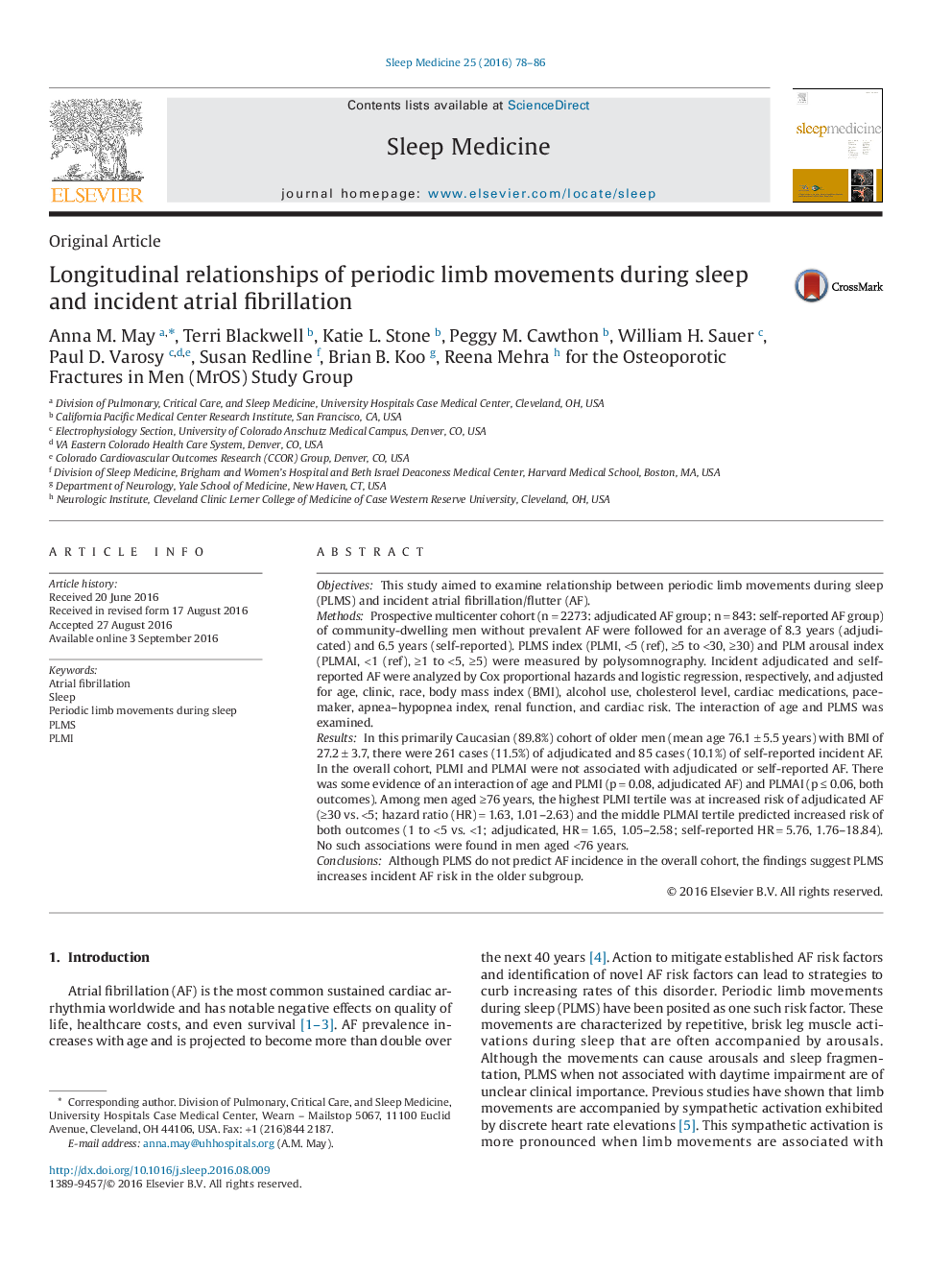| کد مقاله | کد نشریه | سال انتشار | مقاله انگلیسی | نسخه تمام متن |
|---|---|---|---|---|
| 5643934 | 1586483 | 2016 | 9 صفحه PDF | دانلود رایگان |
- Periodic limb movements during sleep (PLMS) are implicated in cardiovascular morbidity.
- We investigated associations of PLMS and incident atrial fibrillation (AF) in a large older male cohort.
- Overall association of PLMS and AF was not identified.
- Findings suggested an interaction between age and PLMS.
ObjectivesThis study aimed to examine relationship between periodic limb movements during sleep (PLMS) and incident atrial fibrillation/flutter (AF).MethodsProspective multicenter cohort (nâ=â2273: adjudicated AF group; nâ=â843: self-reported AF group) of community-dwelling men without prevalent AF were followed for an average of 8.3 years (adjudicated) and 6.5 years (self-reported). PLMS index (PLMI, <5 (ref), â¥5 to <30, â¥30) and PLM arousal index (PLMAI, <1 (ref), â¥1 to <5, â¥5) were measured by polysomnography. Incident adjudicated and self-reported AF were analyzed by Cox proportional hazards and logistic regression, respectively, and adjusted for age, clinic, race, body mass index (BMI), alcohol use, cholesterol level, cardiac medications, pacemaker, apnea-hypopnea index, renal function, and cardiac risk. The interaction of age and PLMS was examined.ResultsIn this primarily Caucasian (89.8%) cohort of older men (mean age 76.1â±â5.5 years) with BMI of 27.2â±â3.7, there were 261 cases (11.5%) of adjudicated and 85 cases (10.1%) of self-reported incident AF. In the overall cohort, PLMI and PLMAI were not associated with adjudicated or self-reported AF. There was some evidence of an interaction of age and PLMI (pâ=â0.08, adjudicated AF) and PLMAI (pââ¤â0.06, both outcomes). Among men aged â¥76 years, the highest PLMI tertile was at increased risk of adjudicated AF (â¥30 vs. <5; hazard ratio (HR)â=â1.63, 1.01-2.63) and the middle PLMAI tertile predicted increased risk of both outcomes (1 to <5 vs. <1; adjudicated, HRâ=â1.65, 1.05-2.58; self-reported HRâ=â5.76, 1.76-18.84). No such associations were found in men aged <76 years.ConclusionsAlthough PLMS do not predict AF incidence in the overall cohort, the findings suggest PLMS increases incident AF risk in the older subgroup.
Journal: Sleep Medicine - Volume 25, September 2016, Pages 78-86
